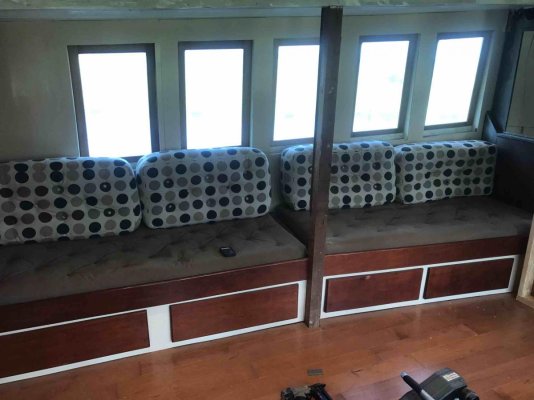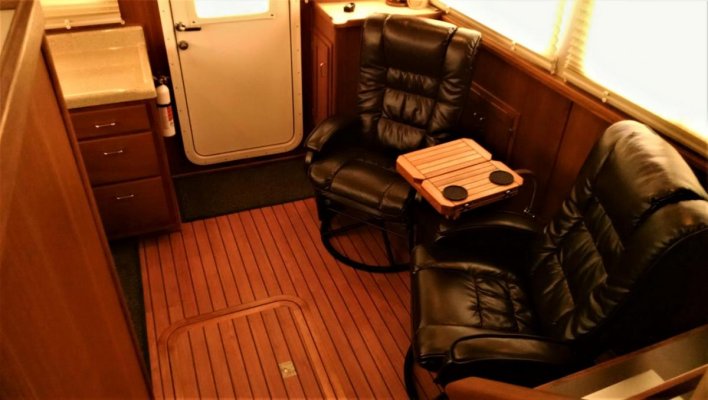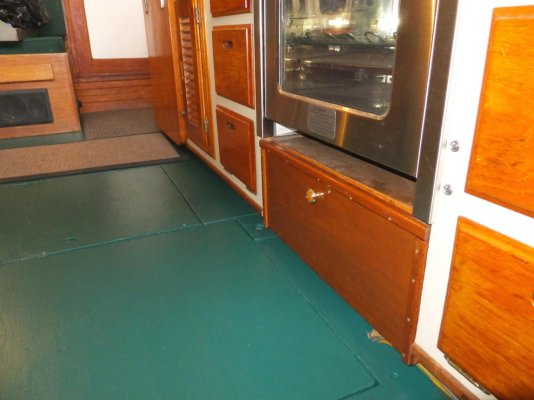Wagmore
Veteran Member
I was all set to take our Nordic 26 in to have the carpet replaced with Amtico - but the sticker shock from a reportedly very reasonable location has me looking at alternatives.
I've a local wood guy that does phenomenal work...a true artisan, but until recently had never worked on a boat. His first experience is just now being completed - I had him do some new overhead cabinets and helm shelf for my electronics retrofit, and they're going to be gorgeous. Now...I'm chatting with him about doing the floors. He's sure he can do them for less than the Amtico quote I received, but he won't touch anything synthetic.
I'm aware of the maintenance benefits of Amtico/Lonseal, but given how little floor space there is in a Nordic 26 - I think a sanding/refinishing every few years wouldn't bother me much. Especially if the result is something more aesthetically pleasing.
Teak/holly planks are priced sky high, and my wood guy has suggested Sapele/maple as one alternative. Beyond aesthetics - what might I keep in mind when choosing a wood species for the floor? What's higher on the durability scale, handles humidity changes best, etc.? What should be avoided?
I've a local wood guy that does phenomenal work...a true artisan, but until recently had never worked on a boat. His first experience is just now being completed - I had him do some new overhead cabinets and helm shelf for my electronics retrofit, and they're going to be gorgeous. Now...I'm chatting with him about doing the floors. He's sure he can do them for less than the Amtico quote I received, but he won't touch anything synthetic.
I'm aware of the maintenance benefits of Amtico/Lonseal, but given how little floor space there is in a Nordic 26 - I think a sanding/refinishing every few years wouldn't bother me much. Especially if the result is something more aesthetically pleasing.
Teak/holly planks are priced sky high, and my wood guy has suggested Sapele/maple as one alternative. Beyond aesthetics - what might I keep in mind when choosing a wood species for the floor? What's higher on the durability scale, handles humidity changes best, etc.? What should be avoided?





